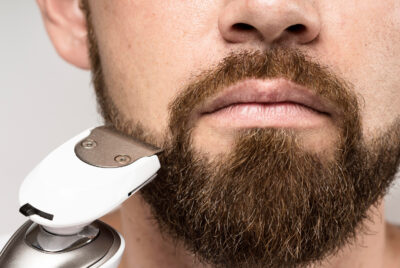Beard Myths
In the realm of male grooming, few topics generate as much discussion and debate as beards. From ancient civilizations to modern-day trends, facial hair has remained a symbol of masculinity, wisdom, and personal style. However, numerous myths surrounding beard growth and maintenance continue to circulate, often leading to confusion and misguided grooming practices. Let’s dive deep into the world of beard myths and uncover the truth behind these popular misconceptions.
The Science Behind Beard Growth
Before we tackle specific myths, it’s essential to understand the fundamental biology of beard growth. Facial hair development is primarily controlled by genetics and hormones, particularly dihydrotestosterone (DHT) and testosterone. These factors determine everything from growth pattern to thickness, making each man’s beard journey unique.
Common Beard Myths Debunked
The Shaving Myth: Does It Really Make Your Beard Thicker?
Perhaps the most persistent beard myth is the belief that frequent shaving leads to thicker, fuller beard growth. This misconception has been passed down through generations, but the science tells a different story. When you shave, you’re simply cutting the hair at its thickest point, creating a blunt end. As the hair regrows, this blunt end can give the illusion of thickness, but it doesn’t actually alter the hair’s structure or growth pattern.
What really influences beard thickness:
- Genetic predisposition
- Hormonal levels
- Age and developmental stage
- Overall health and nutrition
The Hygiene Hypothesis: Are Beards Really Germ Magnets?
A widespread concern about beards is that they’re breeding grounds for bacteria and germs. This myth gained particular traction after several sensationalized media reports suggested beards were as dirty as toilet seats. However, scientific research tells a vastly different story. Well-maintained beards can actually harbor beneficial bacteria that may help protect the skin from certain infections.
Maintaining proper beard hygiene is straightforward:
- Regular washing with appropriate beard products
- Daily brushing to remove debris and distribute natural oils
- Periodic trimming to maintain shape and remove split ends
- Using beard oil to moisturize both the hair and underlying skin
Skin Health and Beards: Friend or Foe?
The relationship between beards and skin health has been subject to numerous misconceptions. While some believe beards cause acne and skin irritation, the reality is more nuanced. A properly maintained beard can actually protect your skin from environmental damage and help regulate natural oil production.
To maintain optimal skin health with a beard:
- Clean both the beard and underlying skin regularly
- Use products specifically formulated for facial hair
- Address any skin issues promptly
- Stay hydrated and maintain a balanced diet
Temperature Regulation: The Truth About Beards and Heat
A common concern among potential beard growers is that facial hair will make them uncomfortably hot, especially during summer months. Interestingly, beards have evolved to serve as natural temperature regulators. They provide insulation against both heat and cold, while also offering protection against harmful UV rays.
Benefits of beard coverage:
- Natural sun protection
- Temperature regulation in various climates
- Protection against wind and environmental elements
- Reduced risk of skin damage and premature aging
The Impact of Modern Grooming Practices
Today’s beard care industry offers numerous products and tools designed to address common concerns and maintain healthy facial hair. Understanding which products work best for your beard type and growth pattern is crucial for optimal results.
Essential beard care components:
- Quality beard wash and conditioner
- Natural oils and balms
- Proper grooming tools
- Regular maintenance routine
Embracing Your Unique Beard Journey
Every man’s beard grows differently, and what works for one person may not work for another. Instead of falling for myths and quick fixes, focus on understanding your particular growth pattern and developing a care routine that works for you.
Looking to the Future
As grooming practices continue to evolve and new research emerges, our understanding of beard care and maintenance will only improve. Understanding and debunking beard myths is crucial for anyone looking to grow and maintain healthy facial hair. By focusing on scientific facts rather than popular misconceptions, you can develop an effective care routine that works for your unique beard type. Remember that patience, proper care, and consistency are the real keys to achieving and maintaining the beard you desire.
The journey to growing and maintaining a healthy beard doesn’t have to be complicated. By separating fact from fiction and following proper care guidelines, you can enjoy the benefits of facial hair while avoiding the pitfalls of common misconceptions. Whether you’re just starting your beard journey or are a seasoned beard enthusiast, staying informed about the truth behind beard myths will help you make better decisions about your grooming routine.




